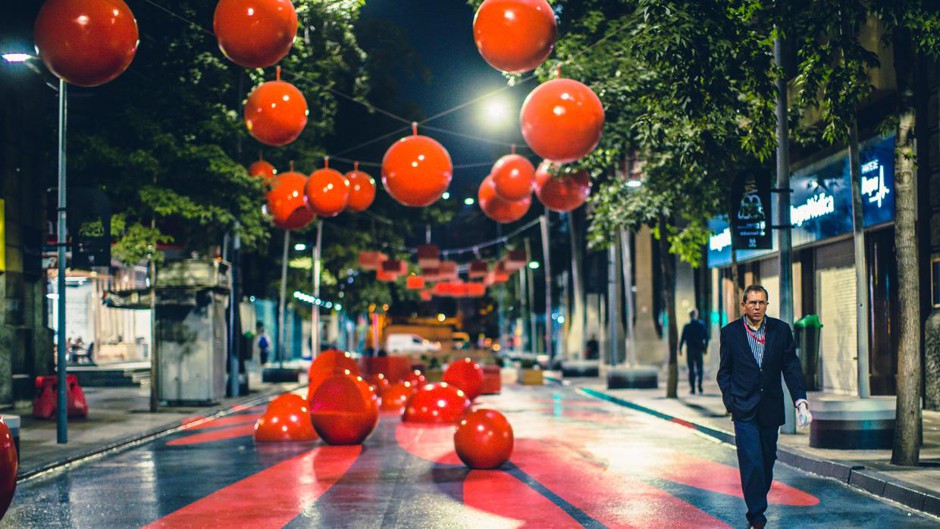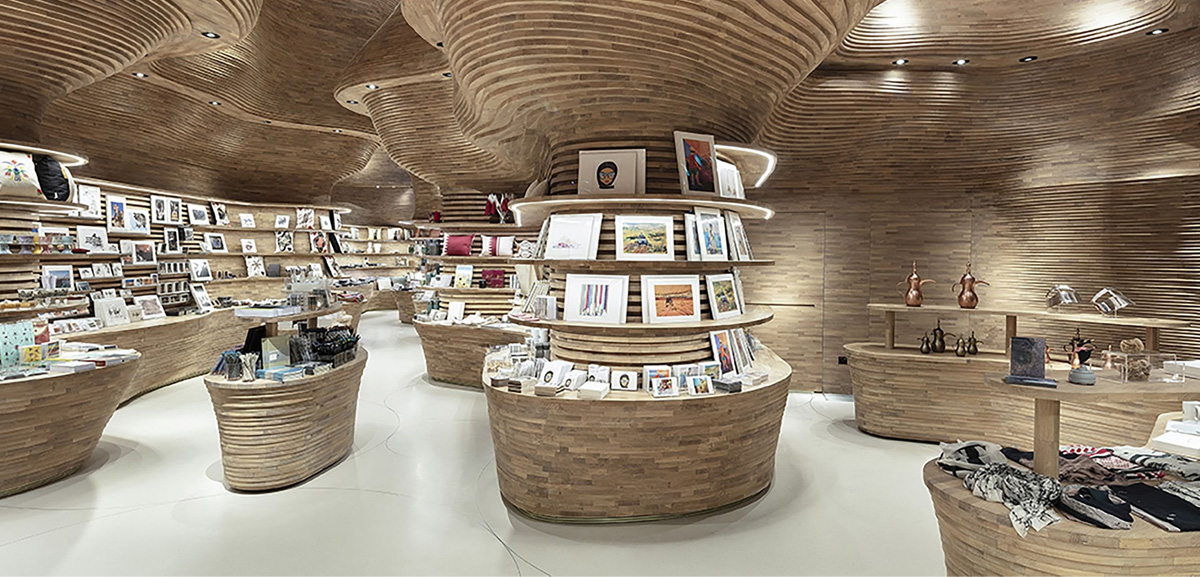It was all done in record time. In just 30 days, more than 120 people—led by 32-year-old Chilean visual artist Dasic Fernández—transformed one of the most congested and iconic streets in the center of the Chilean capital. Today, Bandera Street, next to the government palace and the city’s main square, is a colorful promenade, thanks to an urban intervention that’s unprecedented in Latin America.
Local authorities had sought to do something with this 400-yard section of Bandera Street after it was closed to traffic (both vehicular and pedestrian) for the construction of Line 3 of the Santiago Metro. So Fernández, who lives in New York City, joined forces with architect Juan Carlos López, and in three days they developed a proposal to sway the mayor: The idea was to transform Bandera into an example of tactical urbanism that fused art and architecture, and that would set a precedent for how both disciplines can successfully intervene in urban spaces.
The project was named Paseo Bandera, and it took only three months to materialize from conception to inauguration. The street, now pedestrianized, opened to the public on December 21, 2017, shortly after the last presidential elections in Chile.
“The idea was to pedestrianize the street, to put a little green area, some color and furniture. There was nothing like an elaborate request from the municipality,” said Fernández, who began painting at age 14. “We heard what they wanted, and the truth is that we thought it had tremendous potential.”
The proposal was visually innovative, but it was also attractive from a commercial standpoint: the Municipality of Santiago did not have to take any money out of its pocket. The entire project was financed, basically, through payments made by various brands to make their logos visible on the Paseo, where tens of thousands walk through each day. With the money from these private companies, Fernández was able to close the space to cars and buses, buy the materials, and pay for the expenses of transforming, painting and intervening Calle Bandera. According to the artist, the total cost of the project did not exceed $550,000.
The mural, painted on the asphalt, has an approximate area of 3,300 square meters (or 35,500 square feet), and extends for almost four blocks. It has three sections: The first is inspired by the pre-Hispanic history of Chile, and begins at the intersection between Compañía and Bandera streets, where the Museum of Pre-Columbian Art is located; the second reflects the current diversity of the country, triggered by immigration and cultural changes; and the third, between Moneda and Agustinas streets, seeks to portray the future through more modern furniture and stronger colors.
“We made a team of 20 local and Latin American muralists, who painted each block in eight or 10 hours. There was a whole coordination. It was a true visual choreography,” said Fernández.

Paseo Bandera after pedestrianization (blvckimvges)
However, the future of the intervention is uncertain. At the end of this year, the Chilean capital will have to make a decision: either reopen the Paseo to cars and public transport, or keep it pedestrianized, permanently. The street will continue as it is now until the end of August, the approximate date of the inauguration of the new Line 3 of the Santiago Metro, which passes just under Bandera.
The decision is not in the hands of the municipality, but with the Chilean Ministry of Transport, which has already indicated that the street must be reopened to public transport. However, the mayor of Santiago, Felipe Alessandri, is advocating for Bandera to remain an exclusively pedestrian route and cultural space. “If it was only on me, it would stay forever,” he told Chilean newspaper El Mercurio.
This is not the first time that the Chilean capital has successfully experimented with tactical urbanism. In 2011, citizen groups began advocating to create a bicycle path on one side of the Mapocho River, the backbone of Santiago that crosses 16 communes and divides the capital into two major zones, the north and the south. The project—known as Mapocho Pedaleable, a cycle path of just over 3 miles—was approved last year and is supposed to be operational by 2019.
Another initiative is “pocket squares,” inaugurated in 2016 by the metropolitan government. This urban tactic allows uninhabited spaces—generally in the middle of the city—to be reconditioned as squares and plazas with furniture, cafes, green areas, and rest spaces. Santiago already has 11 of these spaces, and the idea has spread to other cities in Chile.
“It is difficult to take this intervention, this revitalization, this visual refreshment away from the population,” he said. “I believe that this sets a precedent. More projects like this will be coming out in the region. We are sure of that.”
This post originally appeared in Spanish on our sister site, CityLab Latino.







Leave A Comment
You must be logged in to post a comment.